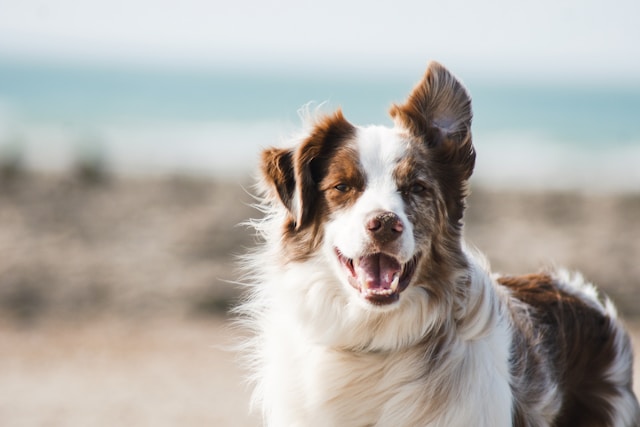Dogs have a way of communicating that’s as complex as it is tail-waggingly fascinating. Their tails? They’re not just for show. These furry appendages are like emotional barometers, giving us a glimpse into the hearts and minds of our four-legged pals, especially if you are a first-time dog owner.
Diving deeper into the tail-wagging world, it’s fascinating to note that not all wags are created equal across the canine kingdom. Each breed has its own set of tail-wagging signals, a unique language shaped by genetics, body structure, and even historical roles.
For instance, the broad and exuberant tail wags of a Labrador Retriever, bred for companionship and service, might signify joy in a more pronounced way than the subtle tail movements of a Greyhound, whose sleek build and racing heritage give it a different communication style.
Understanding these breed-specific nuances can add layers to our interpretation of tail talk, allowing for a more nuanced understanding of each wag, twitch, and swish.
In the quest to truly understand our furry friends, dog owners are turning to science for answers. Enter the dog DNA test, a tool that not only unravels the mysteries of your dog’s genetic heritage but can also shed light on breed-specific behaviors, including tail-wagging habits.
By understanding the genetic blueprint of your dog, you gain insight into certain breed behaviors that are hardwired into your dog’s DNA. This dog DNA test kit can empower you to tailor your communication and training methods to suit your dog’s innate tendencies, including how they express happiness, anxiety, or interest through their tail.
It’s a step towards deeper empathy and a stronger bond, ensuring you’re not just speaking the same language but are also finely tuned into the unique dialect of your dog’s breed.

Let’s decode the secret tail language, shall we? This isn’t just about wagging; it’s about connecting on a whole new level.
Tail Talk 101
The Ecstatic Swish
Picture this: you come home, and there it is, the whirlwind tail wag. That’s pure doggy delight. This tail action screams, “You’re the best thing since sliced bread!” It’s the full-body wag that can’t be mistaken for anything but pure joy.
The “I’m Not Sure” Flutter
Ever seen a slow-motion tail wag with the tail not too high, not too low? That’s your dog dipping their toe in the water, emotionally speaking. They might be stepping into unknown territory, unsure if they’re about to find a friend or a foe. It’s their way of saying, “I’m cautiously optimistic here.”
The “Let’s Not Fight” Wave
A low or tucked tail, barely wagging, can tug at your heartstrings. This is your dog wearing their heart on their sleeve, showing vulnerability. They’re essentially saying, “I come in peace.” It’s a signal that they might need a confidence boost or a gentle pat to know everything’s okay.
The “Back Off” Twitch
Not all wags are welcoming. A rigid tail moving in a slow, controlled manner? That’s your dog’s alarm system going off, signaling they’re not comfortable with the situation. This tail says, “Respect my space,” loud and clear, often accompanied by a more dominant stance.
The Tail Position Dictionary
High and Rigid: “I’m the boss here.”
Straight Out: “Something’s got my attention.”
Low or Hidden: “Feeling a bit vulnerable.”
Big Wags: “Life is good!”
Slow Wags: “Still deciding how I feel.”
Context Is Key
Remember, the tail is just part of the story. Dogs communicate with their whole body — ears, eyes, posture, the works. A wagging tail with relaxed body language means something very different from the same wag in a tense situation.
Strengthening Bonds Through Tail-Speak
Understanding these tail signals can seriously up your dog-whispering game. It’s about knowing when your buddy needs a hug, when they’re ready to play, and when they just need a little space. It’s about building trust and showing you’re truly in tune with their feelings.
In wrapping up, unlocking the secret language of dog tails is like getting a backstage pass to your dog’s emotions. It’s about deepening that magical bond between you and your dog, proving that sometimes, the best conversations happen without words.
So, next time that tail starts going, pay attention — you’re about to receive a message straight from the heart.
